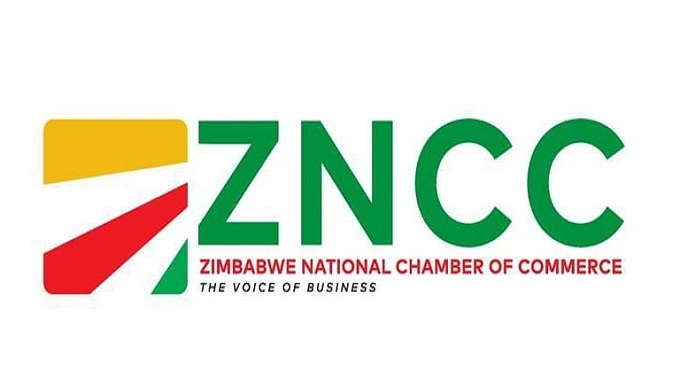Zimpapers Q1 F25: Rewriting the narrative of media legacy in a digital era
HARARE – Zimbabwe Newspapers (1980) Limited—better known as Zimpapers—finds itself grappling with a complex dilemma. Once the unchallenged custodian of mass communication, the group now straddles the uncomfortable line between historical prestige and digital disruption. The 2024 full-year financial results and the first quarter trading update for 2025 tell a compelling story—not just of numbers, but of evolving consumer preferences, structural weaknesses, and a pressing need to redefine value in a media business.
Zimpapers’ revenue for the full year 2024 contracted by 12% to ZWG640.2 million, a decline that strikes at the heart of the business’s foundational units: print, broadcasting, and commercial printing. Though each segment tells a distinct story, a unifying thread runs through them—shrinking relevance in the face of transformation. The newspaper division, long the jewel in Zimpapers’ crown, recorded a 17% drop in revenue, with print volumes down by 15%. Advertisers, once the bedrock of the business model, deferred commitments or fled entirely. Consumers, meanwhile, have not just moved online—they’ve settled there.
The broadcast segment, though still pulling significant radio audiences, was weighed down by an underperforming television operation that continues to bleed resources. The commercial printing division, affected by both demand shocks and operational inefficiencies, suffered a 5% dip in revenue, revealing a troubling cost-to-output imbalance made worse by outdated machinery and power disruptions.
What emerges from these figures isn’t just a matter of market softness or economic headwinds. It’s a deeper signal: the products and platforms that once sustained Zimpapers are no longer aligned with how audiences and advertisers interact with media today.
There is a curious paradox at play. Zimpapers is reaching more people than ever—its digital footprint swelled to 10.5 million users in 2024, and then surged to 11.3 million by the end of Q1 2025. Yet revenue has declined. This disconnect between reach and revenue reveals a fundamental flaw in the company’s value extraction model. It is engaging eyeballs but not converting them into income.
This is not just about falling volumes—it’s about diminishing pricing power. Whether in print circulation, radio air time, or commercial printing orders, Zimpapers is facing stiff resistance in commanding a premium. Advertising spend is shrinking across traditional platforms, in particular the retailers, and the migration to digital is accompanied by expectations of lower cost per impression. The company isn’t just selling less; it is selling into a market where every unit is worth less than it used to be.
This erosion of value is most stark in the gross profit margin, which dipped to 55% from 57% in 2023. Input costs, particularly for raw materials and utilities, are rising, but Zimpapers cannot pass them on to price-sensitive customers. The result is a weakening ability to translate engagement into earnings.
The company has now adopted a “digital and mobile first” approach – a concept that Trevor Ncube adopted in 2012 – leveraging analytics to understand audience behaviour and investing in its presence across multiple platforms. Its radio stations and digital publications are vibrant presences on social media, attracting millions of impressions and growing communities.
But herein lies a tension: audience growth has outpaced monetisation capacity. In Q1 2025, despite a 19% year-on-year growth in audience, the company posted a net loss margin of 20%, up from 8% in the same quarter of the prior year. This dissonance between digital traction and profitability points to the structural limitations of the business model.
A large audience doesn’t inherently translate into financial sustainability, especially when advertising budgets are tightening and content is abundant and free.
In essence, Zimpapers is playing a volume game in a market that increasingly rewards precision and personalization. Advertisers no longer just want scale—they want measurable impact, targeted engagement, and immersive experiences. Without the tools to deliver this value proposition, even a large audience base becomes difficult to monetize meaningfully.
Zimpapers’ traditional strengths are beginning to act more like anchors than assets. The television segment, which continues to suffer from visibility issues due to limited transmission infrastructure and high regulatory costs, dragged down performance in both FY2024 and Q1 2025. Radio, despite strong listener numbers, has not been fully leveraged for revenue, suggesting inefficiencies in sales strategies or limited advertiser confidence in return on spend.
The commercial printing division is facing an even starker reality. Equipment obsolescence, inventory shortfalls, and power outages have made operations unpredictable and margins thin. In Q1 2025, the division’s volumes declined 28% compared to the same period last year. Without a bold recapitalization strategy or a shift in focus, the segment risks becoming commercially irrelevant.
More broadly, Zimpapers is dealing with a heavy cost base – the biggest challenge that it has faced over the years. Administrative and distribution expenses remain stubbornly high relative to output, revealing a structure built for scale in a market that now rewards agility and specialization.
If Zimpapers is to craft a future that honours its legacy but embraces modernity, it must ask hard questions. What does it truly offer in a world where anyone can be a content creator? How does it differentiate itself in a landscape dominated by user-generated content, algorithmic curation, and short-form storytelling? What kind of journalism can still command trust and payment?
Answers to these questions will not come from merely trimming costs or chasing volumes. They will come from rethinking value itself—building subscription models, investing in quality over quantity, embracing partnerships with tech platforms, and empowering editorial teams to experiment with new formats and tools.
The Road Ahead
Zimpapers has the brand equity, the audience reach, and the institutional history to emerge stronger. But it will require not just tactical tweaks, but a strategic reinvention. The story of Zimpapers is not just about a company in transition. It is about a media house confronting its own mythology—one built in the age of ink and print—and daring to rewrite it in pixels and code. Whether it can do so with enough urgency and clarity will define its relevance for the next generation.
In the end, Zimpapers isn’t just fighting for profitability. It is fighting for its right to be central to Zimbabwe’s public discourse in a world where the attention span is short, the choices infinite, and trust hard to earn. The next chapter is being written now—will it be a story of reinvention or resignation? But then again, as a previous Information Minister once said, Zimpapers was never designed to make a profit!-finx









